24+ Years Experience
Specialist Epoxy Resin Flooring

Enquire Today For A Free No Obligation Quote
Understanding Epoxy Resin Flooring
Epoxy resin flooring is a popular choice for various commercial, industrial, and residential applications due to its durability, chemical resistance, and aesthetic appeal. It is a type of seamless flooring system composed of epoxy resin and a hardener, which, when combined, form a strong and resilient coating. Epoxy resin flooring is known for its smooth and glossy finish, making it an ideal choice for spaces that require an attractive and easy-to-maintain floor.
Importance of Anti-Skid Treatments
One crucial aspect to consider when installing epoxy resin flooring is its slip resistance. In areas where the floor is prone to becoming wet or slippery, it is important to apply anti-skid treatments to enhance safety and prevent accidents. These treatments provide traction and improve the grip on the surface, reducing the risk of slips and falls. Anti-skid treatments are particularly important in spaces such as kitchens, bathrooms, walkways, and industrial facilities where slip hazards are prevalent.
Types of Anti-Skid Treatments
There are various types of anti-skid treatments available for epoxy resin flooring, each with its own properties and applications. These include aggregate anti-skid treatments, textured anti-skid treatments, and topical anti-skid treatments. Aggregate treatments involve broadcasting materials such as quartz or aluminum oxide onto the surface to create a textured surface. Textured treatments utilize additives or patterns to create a non-slip surface, while topical treatments involve applying a coating with anti-slip properties over the epoxy resin flooring.
Factors to Consider When Choosing an Anti-Skid Treatment
When selecting an anti-skid treatment for epoxy resin flooring, several factors should be taken into consideration. Firstly, the traffic and use requirements of the space should be evaluated to determine the level of slip resistance needed. Aesthetic considerations such as color and finish should align with the overall design scheme. Lastly, maintenance and cleanability should be considered to ensure the longevity and effectiveness of the anti-skid treatment.
How to Apply Anti-Skid Treatments on Epoxy Resin Flooring
The process of applying anti-skid treatments may vary depending on the type chosen. Aggregate anti-skid treatments require a step-by-step process of applying the epoxy resin coating, broadcasting the aggregate material, and sealing the surface. Textured treatments involve mixing additives into the epoxy resin before application, while topical treatments are applied as a separate layer after the epoxy resin flooring has cured. Following manufacturer instructions and guidelines is essential to ensure proper application and optimal slip resistance.
Maintaining and Extending the Lifespan of Anti-Skid Treatments
Regular maintenance is crucial in preserving the slip resistance and extending the lifespan of anti-skid treatments on epoxy resin flooring. Best practices for cleaning and maintenance include using non-abrasive cleaning agents, avoiding harsh chemicals, and using appropriate cleaning tools. It is important to regularly inspect the floor for any signs of damage or wear on the anti-skid treatment. Identifying and repairing any damaged areas promptly can help maintain the effectiveness of the treatment and prevent further deterioration.
By understanding the importance of anti-skid treatments, selecting the right type for the specific requirements, and following proper application and maintenance guidelines, epoxy resin flooring can provide a safe and durable flooring solution with enhanced slip resistance.
Epoxy resin flooring is a popular choice due to its durability, versatility, and aesthetic appeal. To understand epoxy resin flooring better, let’s delve into the details of this type of flooring.
Epoxy resin flooring is a type of flooring system that consists of epoxy resin, a two-part mixture of resin and hardener, which creates a durable and seamless surface. It is commonly used in industrial and commercial settings due to its high strength, chemical resistance, and easy maintenance. Epoxy resin flooring provides a smooth and glossy finish that is not only aesthetically pleasing but also enhances the overall durability of the floor. It is commonly used in areas that require a clean and hygienic environment, such as hospitals, laboratories, and food processing facilities. Notably, epoxy resin flooring can last up to 20 years with proper maintenance.
Epoxy resin flooring is popular for several reasons, making it a popular choice among homeowners and businesses alike.
The importance of anti-skid treatments for epoxy resin flooring cannot be overstated. These treatments are crucial for ensuring the safety of individuals in areas with smooth or wet surfaces. Slip and fall accidents can result in severe injuries and liabilities for businesses. By applying anti-skid treatments, the risk of accidents can be significantly reduced. These treatments create traction and improve grip on the floor, providing a firm footing for pedestrians. It is vital to invest in high-quality anti-skid treatments to maintain a safe environment and prevent accidents. Fun Fact: Did you know that slip and fall accidents account for more than 1 million hospital visits in the UK every year?
Anti-skid treatments are necessary for epoxy resin flooring to ensure safety and prevent accidents. The smooth and glossy surface of epoxy resin flooring can become slippery, especially when wet or exposed to substances like oil or water. Anti-skid treatments improve grip and provide traction, reducing the risk of slips and falls. These treatments create a textured surface or incorporate aggregates that increase friction, making the flooring safer to walk on. By using anti-skid treatments, the potential hazards of a slippery epoxy resin floor can be mitigated, providing a secure and reliable flooring solution.
Anti-skid treatments for epoxy resin flooring offer several benefits that improve safety and functionality:
Discover the various options for anti-skid treatments for epoxy resin flooring as we delve into the different types of treatments. We will discuss aggregate treatments, textured solutions, and topical solutions in detail. Learn about the advantages and factors to consider for each approach, helping you make an informed decision for your epoxy resin flooring project. Prepare to find the ideal anti-skid treatment to meet your specific flooring requirements.
Aggregate anti-skid treatments are a vital aspect of epoxy resin flooring, as they enhance traction and prevent slips and falls. These treatments involve incorporating aggregate materials into the flooring surface, resulting in a textured finish. Commonly used aggregate materials include quartz, aluminum oxide, and silica sand.
When selecting the appropriate aggregate anti-skid treatment, it is essential to consider factors such as traffic and use requirements, aesthetic considerations, and maintenance and cleanability.
| Traffic and Use Requirements | Aesthetic Considerations | Maintenance and Cleanability |
|---|---|---|
| High traffic areas may necessitate a more aggressive aggregate for improved traction. | Select an aggregate that complements the overall design and aesthetics of the space. | Consider the ease of cleaning and maintenance to ensure the longevity of the treatment. |
By following a step-by-step guide, you can effectively apply aggregate anti-skid treatments to epoxy resin flooring. Regular cleaning and maintenance practices are crucial for extending the lifespan of these treatments.
To ensure the success of your aggregate anti-skid treatment, it is recommended to consult with professionals in epoxy resin flooring who can provide expert advice and guidance tailored to your specific needs.
Remember, when it comes to aggregate anti-skid treatments, proper selection and application are key to achieving optimum safety and performance for your epoxy resin flooring.
By following these steps, you can achieve a durable and slip-resistant surface for your epoxy resin flooring.
Topical anti-skid treatments are a popular choice for improving the safety of epoxy resin flooring. These treatments offer several benefits, including increased traction, durability, and customizability.
One of the main advantages of topical treatments is that they create a textured surface that enhances grip and reduces the risk of slips and falls. This is particularly important in areas with heavy foot traffic where safety is a priority.
Additionally, topical treatments are designed to be long-lasting and resistant to wear and tear. They can withstand the demands of high traffic areas without losing their effectiveness.
Another benefit of topical treatments is that they come in a variety of finishes, allowing you to choose the level of aggressiveness that suits your specific needs. Whether you need a subtle texture or a more aggressive grip, there is a topical treatment available for you.
When choosing a topical anti-skid treatment, it is important to consider factors such as the desired level of slip resistance, aesthetic preferences, and ease of maintenance. Consulting professionals for proper application and maintenance techniques is highly recommended.
When choosing an anti-skid treatment for epoxy resin flooring, it is important to consider various factors. These factors include the specific traffic and use requirements, as well as the desired aesthetic outcome. Each decision made can greatly affect the overall performance and appearance of the flooring. Maintenance and cleanability also play a vital role in ensuring the longevity and durability of the treated surface. In this section, we will delve into these factors and provide you with the information you need to choose the appropriate anti-skid treatment.
When choosing an anti-skid treatment for epoxy resin flooring, it is important to consider the traffic and use requirements of the space. This will ensure that the treatment chosen is appropriate for the level of foot or vehicle traffic that the floor will experience.
| Traffic and Use Requirements: | Consider the expected foot or vehicle traffic in the area where the epoxy resin flooring will be installed. |
| Aesthetic Considerations: | Take into account the desired appearance of the flooring, as some anti-skid treatments may alter the visual appeal. |
| Maintenance and Cleanability: | Evaluate the ease of maintenance and cleanliness of the selected anti-skid treatment to ensure long-term viability. |
It is vital to choose an anti-skid treatment that aligns with the specific needs of the space to ensure optimal safety and performance.
In the early 1900s, the first anti-skid treatments were developed to improve the safety of roadways. By introducing materials like sand and gravel onto the surfaces, traction was increased, reducing the risk of accidents caused by slippery roads. Over time, these treatments have evolved, becoming essential for various applications such as epoxy resin flooring, where they play a vital role in preventing slips and falls.
When considering the aesthetic aspects of epoxy resin flooring, there are several factors to keep in mind to ensure a visually appealing result:
Maintaining and cleaning epoxy resin flooring is essential for ensuring its longevity and performance. To effectively maintain and clean the flooring, follow these steps:
Regular Cleaning: Sweep or vacuum the surface to remove loose dirt and debris.
Spot Cleaning: Clean up spills and stains promptly to prevent them from becoming permanent.
Mild Detergent Solution: Use a pH-neutral, non-abrasive cleaner mixed with water for routine cleaning. Avoid using harsh chemicals that can damage the epoxy surface.
Soft Bristle Brush or Mop: Gently scrub the floor using a soft bristle brush or mop to remove dirt and grime.
Rinse Thoroughly: Rinse the floor with clean water to remove any residue from the cleaning solution.
Drying: Allow the floor to air dry or use a clean, dry mop or cloth to remove excess moisture.
Preventive Measures: Place mats at entryways to trap dirt and prevent it from being tracked onto the floor. Use furniture pads to avoid scratching the surface.
Regular Inspections: Periodically inspect the flooring for any signs of damage or wear and take appropriate action to repair or replace affected areas.
Looking to make your epoxy resin flooring safer with anti-skid treatments? In this section, we will guide you through the process of applying various types of anti-skid treatments on your epoxy resin flooring. Whether you prefer aggregate, textured, or topical options, we have all the information you need. We will help you choose the right materials and ensure a seamless application, so you can transform your flooring into a slip-resistant surface. Say goodbye to worries about accidents and hello to a safer environment. Let’s begin!
Applying aggregate anti-skid treatments to epoxy resin flooring involves a step-by-step process for optimal results.
To apply textured anti-skid treatments on epoxy resin flooring, follow this step-by-step guide:
By following these steps, you can successfully apply textured anti-skid treatments to enhance the safety and performance of epoxy resin flooring.
To apply topical anti-skid treatments on epoxy resin flooring, follow these steps:
Discover the secrets to prolonging the lifespan of anti-skid treatments for your epoxy resin flooring! In this section, we reveal the key techniques that will assist you in maintaining and extending the longevity of these essential coatings. From implementing effective cleaning practices to promptly identifying and repairing damages, we have you covered. Bid farewell to slippery floors and welcome a safer, more durable surface. Let’s delve into the optimal methods for maintaining and enhancing your anti-skid treatments!
Proper cleaning and maintenance are essential for preserving the longevity and effectiveness of anti-skid treatments on epoxy resin flooring. Here are some best practices to follow:
By following these best practices for cleaning and maintenance, you can ensure that your epoxy resin flooring with anti-skid treatments remains in optimal condition, providing a safe and durable surface for years to come.
Identifying and repairing damaged anti-skid treatments for epoxy resin flooring is essential to maintain safety and longevity. Here are the steps to follow:
Anti-skid treatments for epoxy resin flooring are designed to reduce the risk of slipping and skidding, especially in areas with high pedestrian or vehicular traffic. They create a slip-resistant surface to improve safety and prevent accidents.
Anti-slip epoxy resin floor paint contains additives that create a rougher texture on the surface, enhancing slip resistance. These additives can be mixed into the paint or applied as a topcoat to provide a durable and effective anti-slip finish.
Several factors can influence the slip resistance of epoxy resin flooring, including the texture of the surface, the presence of any contaminants or spillages, the speed and type of traffic (pedestrian or vehicular), and the type of footwear or tires used.
By applying anti-skid treatments to epoxy resin flooring, you can mitigate the risk of slip and trip accidents, reduce the potential for injury and liability, and comply with health and safety regulations. It provides a cost-effective solution for creating skid-resistant surfaces in various industrial environments.
The selection of the right anti-slip treatment depends on factors such as the intended use of the area, the level of foot or vehicle traffic, and the specific hazards present. Consulting with a resin flooring specialist like Impact Flooring can help you determine the best option for your environment.
The recommended number of coats for anti-slip epoxy resin floor paint can vary depending on factors like the condition of the substrate and the desired slip resistance. However, as a general guideline, applying two roller-applied coats is often sufficient to achieve the desired level of slip resistance.

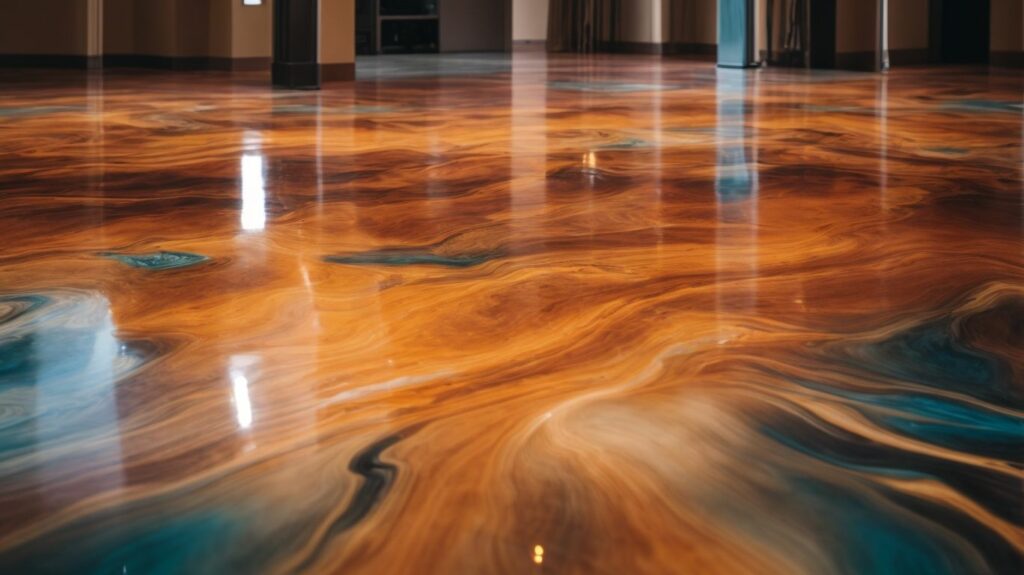
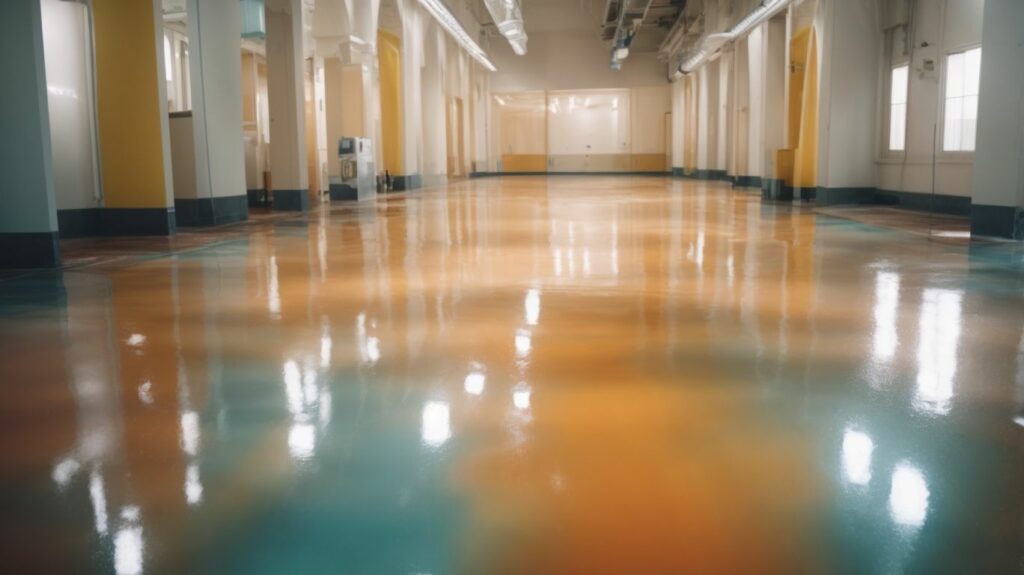



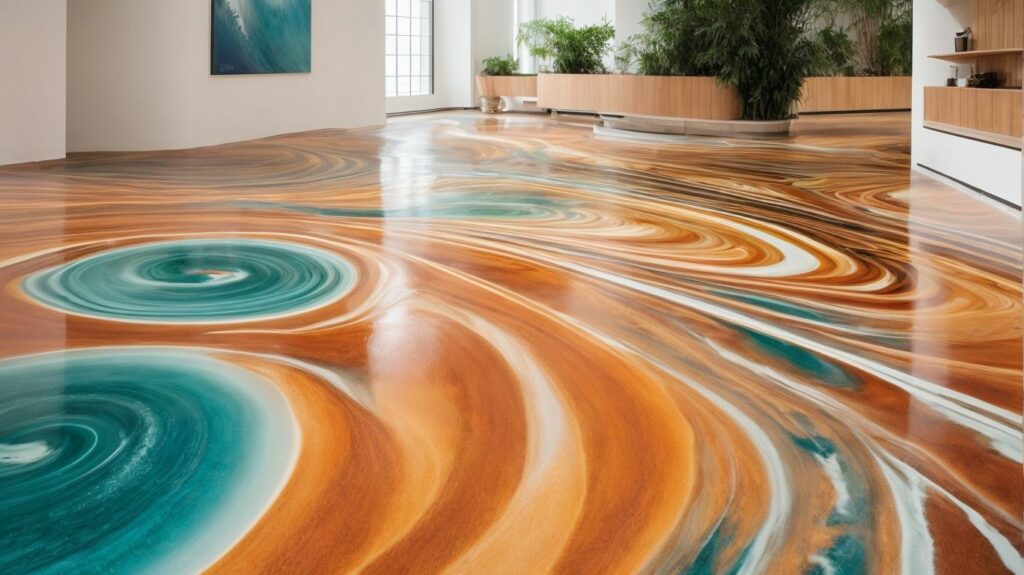

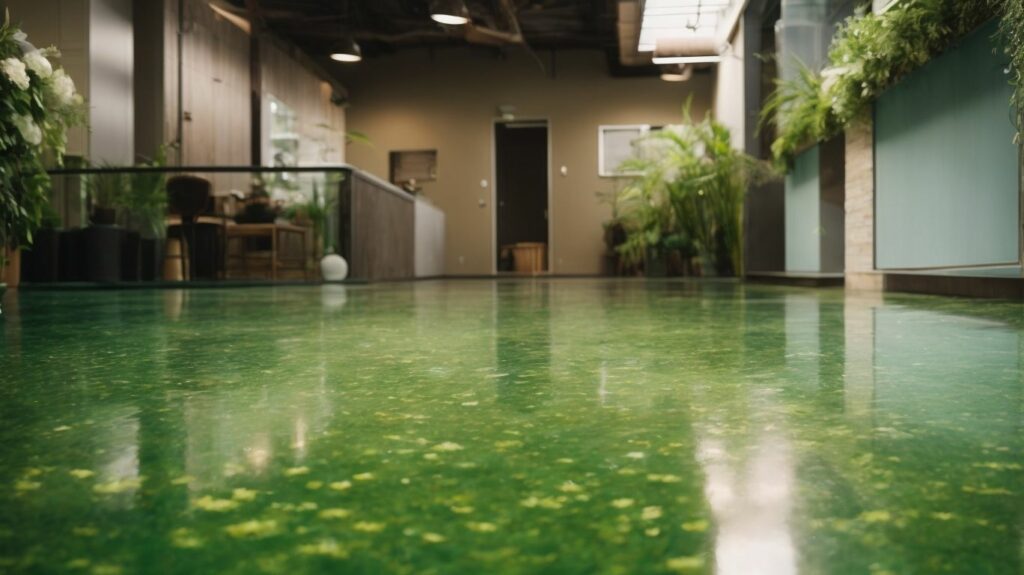

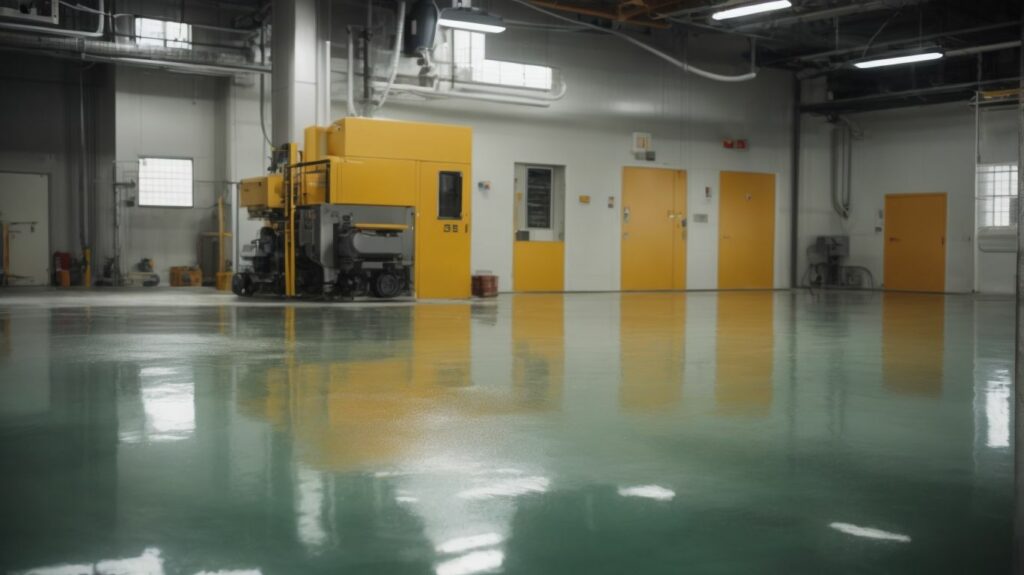




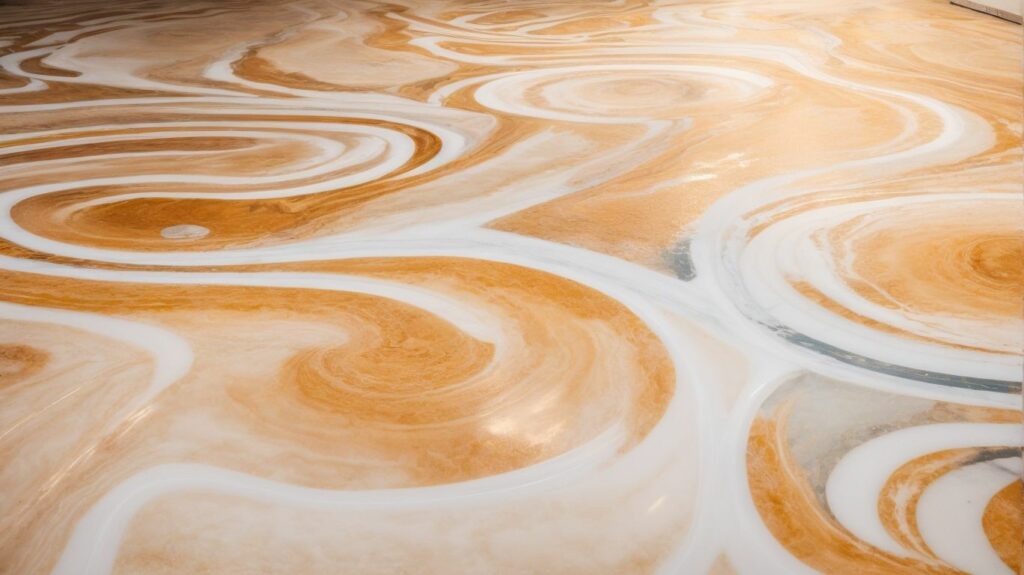

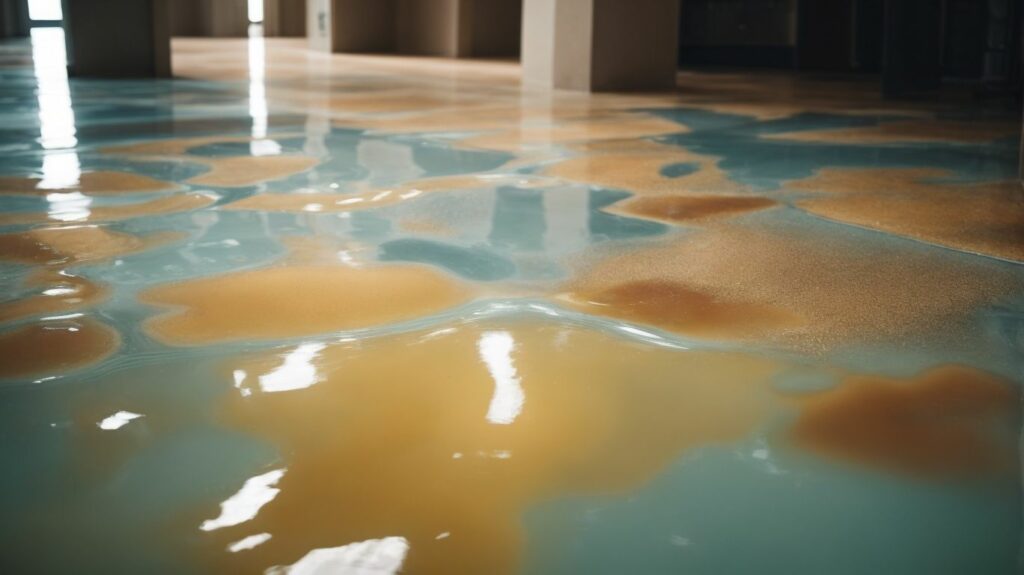
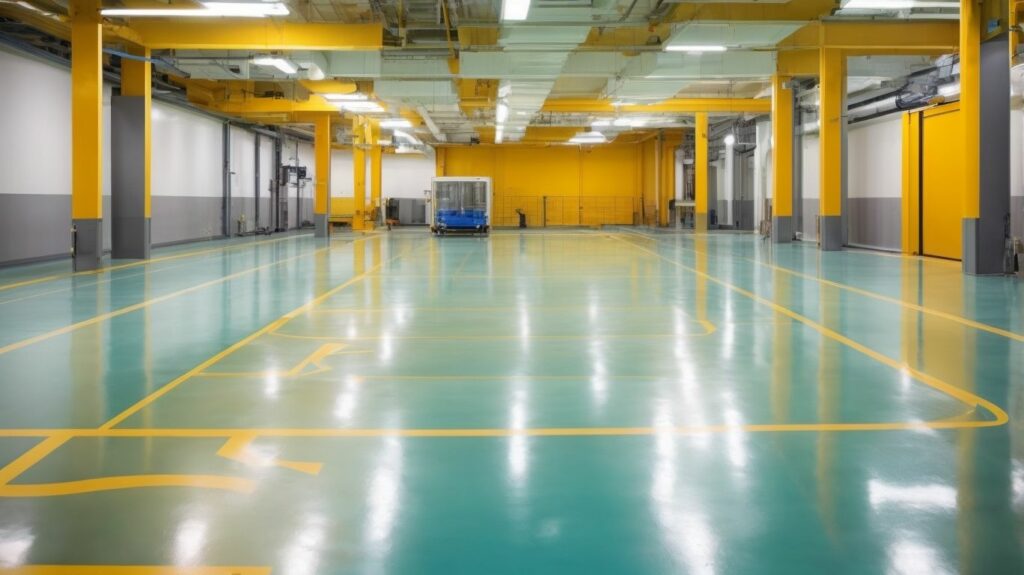


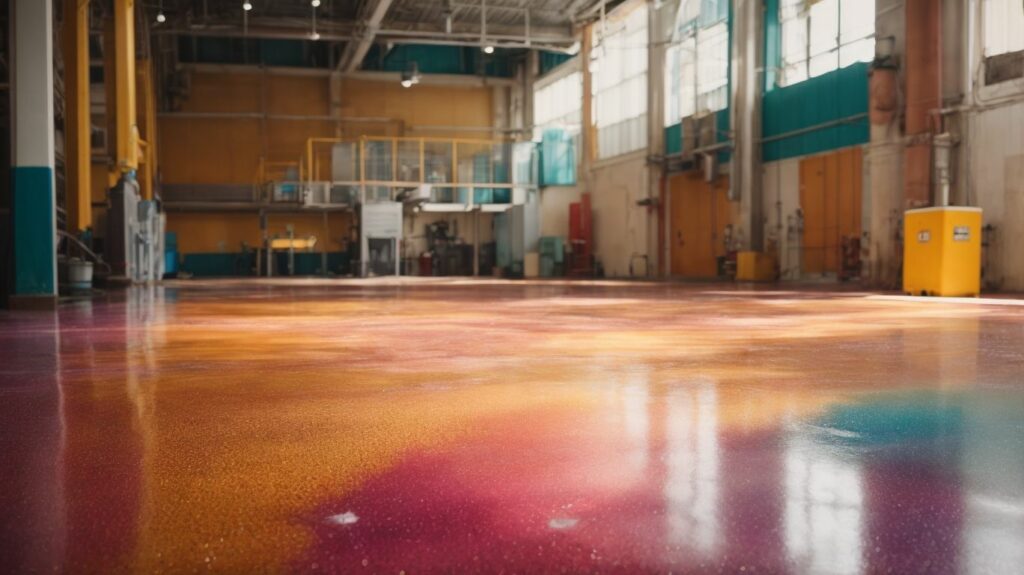
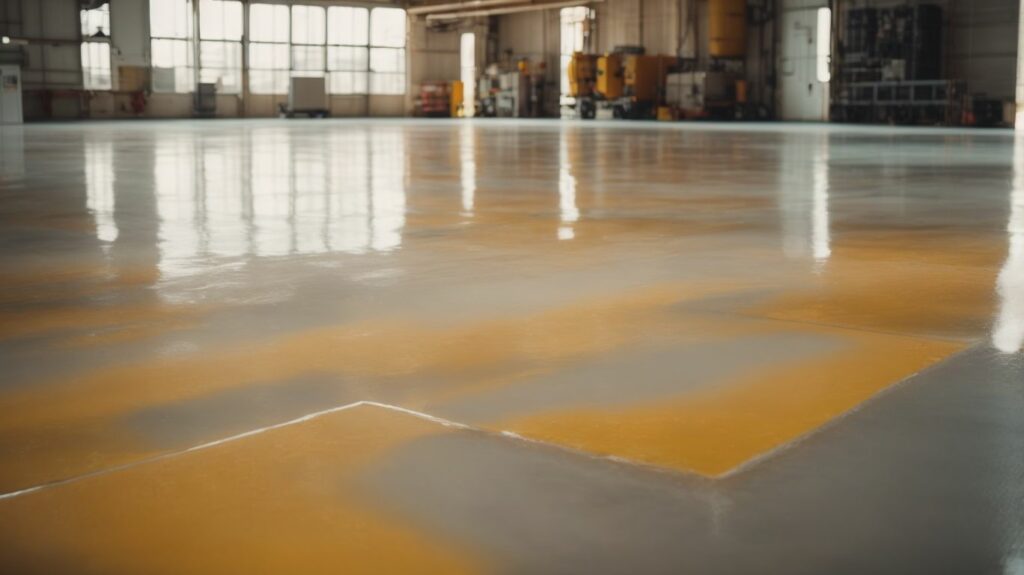
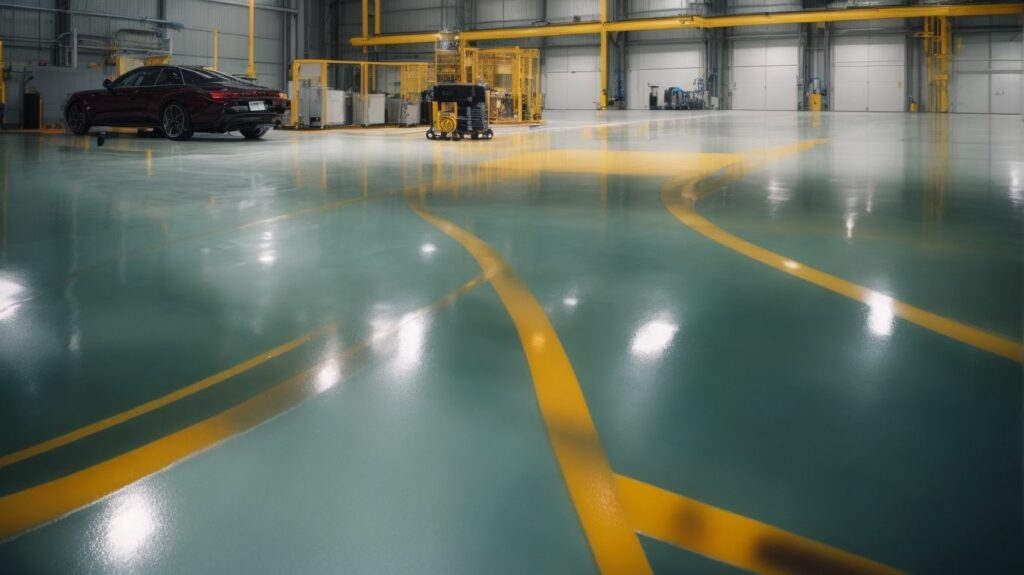



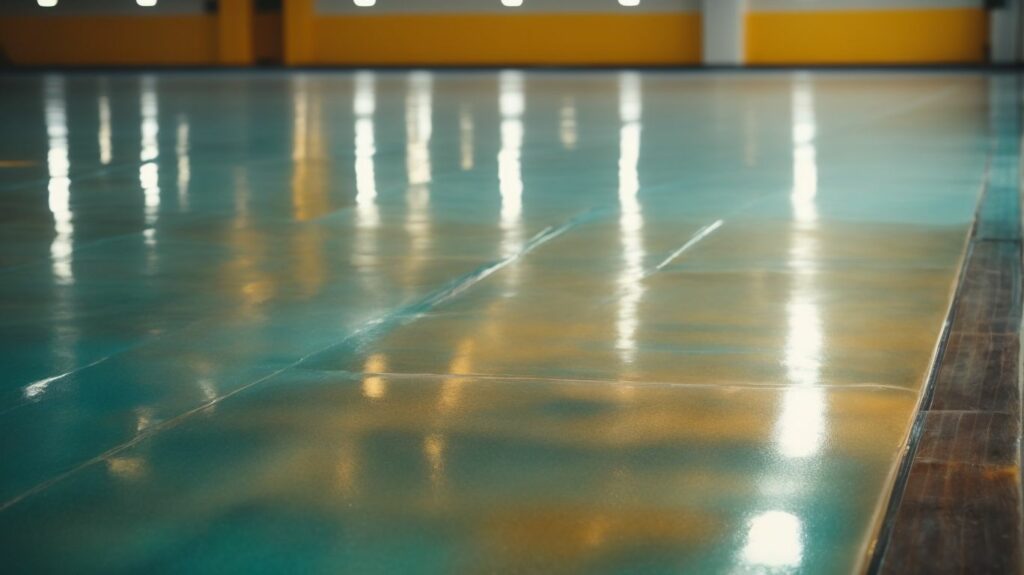

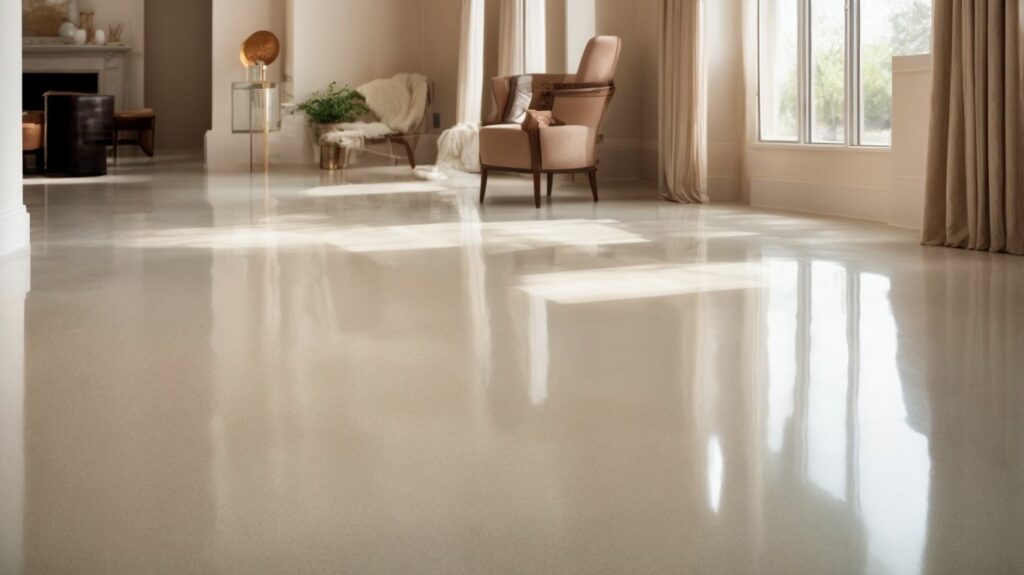
We Aim To Reply To All Enquiries With-in 24-Hours